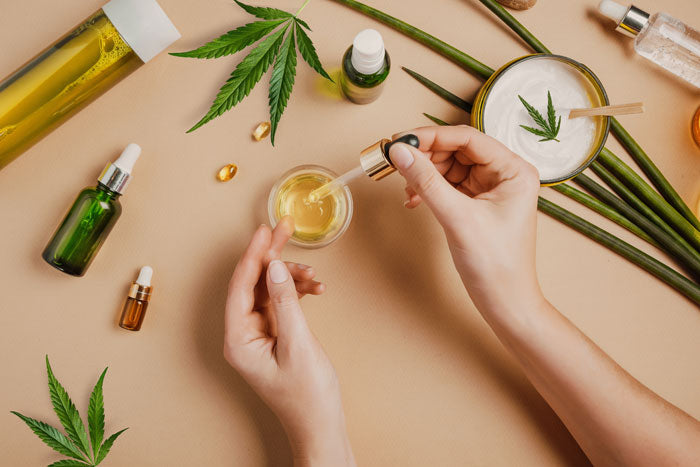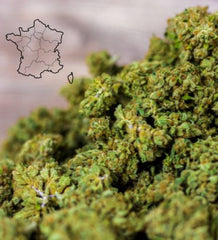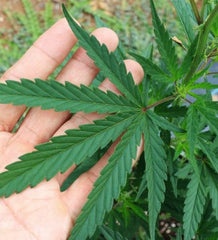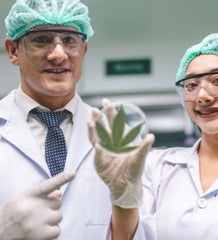
Linalool and CBD
Linalool is known by the scientific name 3,7-dimethyl octa-1,6-dien-3-ol . It is a terpene alcohol used in the composition of cleaning products, cosmetics and especially room diffusers. Pleasant and fresh, the scent of linalool is also used for the aromatic plant composition of certain perfumes. Associated with essential oils, linalool is a perfect compound found in several plants as well as conifers. This molecule also helps to enhance the effects of the cannabinoid.
Linalool can be combined with CBD to create effective products for treating certain health conditions. Linalool combined with cannabis helps reduce seizures in a person by altering the activation of glutamate. Linalool acts on glutamate , the neurotransmitter that stimulates the brain and triggers seizures. Although present at low levels, it acts as an anti-glutamate. According to analyses and studies conducted by experts, linalool helps enhance the therapeutic effects of cannabinoids .
What are the chemical properties of linalool ?
Linalool is a molecule found in various lamiaceae plants such as mint, orange blossom, rosemary, coriander , thyme, and sweet basil. Sources of pure or blended linalool include citrus fruits, mushrooms, rosewood, and birch. The chemical properties of linalool are :
- molar mass: 154.2493 ± 0.0096 g/mol C 77.87%, H 11.76%, O 10.37%,
- linalool crude formula: C10H180.
What are the physical properties of linalool ?
Linalool also has physical properties :
- a density of 0.9 g cm-3;
- solubility in water at 25°C: 1.6 g 1-1;
- a flash point: 75°C;
- explosive limits in air: 2.97% vol;
- Melting point: 28.25°C
- saturated vapor pressure at 25°C: 21 Pa;
- a self-ignition temperature of 235°C;
- Boiling temperature: 198 to 200°C.
How is linalol used?
A volatile compound found in some perfumes, hygiene products, and essential oils, linalool in bottles is used in aromatherapy. There are several ways to use linalool when the molecule is mixed into other products. To avoid respiratory and infectious allergy problems, it is important to follow the doses prescribed by health professionals or perfume and cosmetic experts.
Linalool and the manufacture of essential oils
Very present in nature, linalool is used in the design of several essential oils , more specifically the manufacture of floral perfumes to be used in a diffuser. Linalool is found in plants of the Lauraceae, Labiatae, and Apiaceae families. Organic essential oil is made from these medicinal plants in varying proportions.
Lavender also contains linalool and is used in the composition of essential oils with a tonic effect ranging from 30 to 70%. You can use linalool - based vegetable oil for massages or inhalation to treat thymus vulgaris and sinusitis problems. Linalool properties are present in essential oils to help patients with its various benefits .
Linalool has anticonvulsant, anxiolytic, sedative , analgesic, and antidepressant properties. Providing a stimulating effect, thyme essential oil boosts your immune defenses and prevents bronchitis. However, it is best not to use the product in pregnant women .
Linalool and cosmetic products

For cosmetic products that use essential oils during their production, the drops of linalool obtained through distillation become a preservative. Used only in large quantities, linalool serves to enrich essential oils to increase the molecule's antimicrobial effect. During product use, linalool creates a synergistic effect.
In some cases, cosmetic manufacturers must combine linalool with an antiseptic to prevent skin irritation and acne , as well as respiratory problems. The most well-known antiseptic used in cosmetics is chlorhexidine dilocunate. Linalool can be combined with this product to provide true softness.
Linalool and hygiene products
In addition to the cosmetics and essential oils that linalool can produce, this diluted molecule is also used in the manufacture of aromatic hygiene products. The lavender and eucalyptus scent you smell when using your air fresheners and hygiene products comes from linalool.
On the other hand, it's important to consider possible allergies caused by hygiene products. When purchasing your hygiene products containing linalool, you should consider allergic reactions to this ingredient. It's important to study the dose of linalool present in the products to reduce the risk of irritation during use and ensure their effectiveness.
To conclude on linalool
Linalool is found in several plants, including CBD flowers . While the presence of linalool in this flower is not yet well known by consumers, there are several products on the market that contain this molecule. The aroma of cannabis generally comes from the linalool molecule found in the flower.
It should be noted that linalool is used in the design of medicines , cosmetics, hygiene products and essential oils of lavender, niaouli, bay leaf and peppermint. Essential oils containing linalool are diluted and then applied to mycoses to soothe the pain . Antibacterial since they act on the mucous membranes, these oils are noble and also soothe muscular tension.





